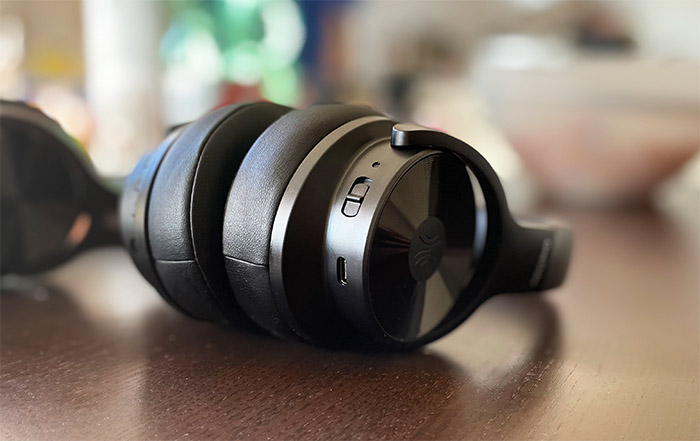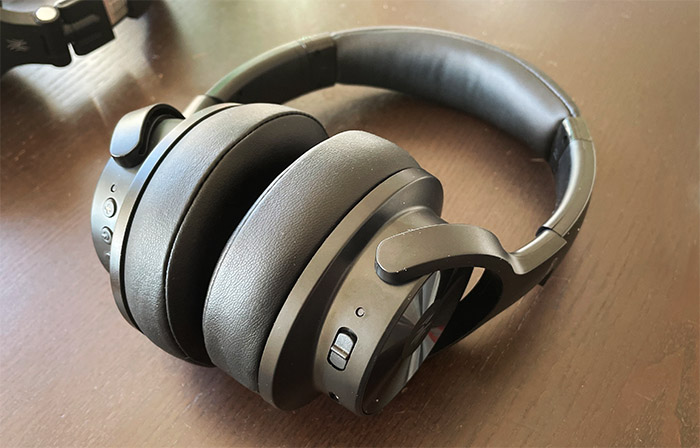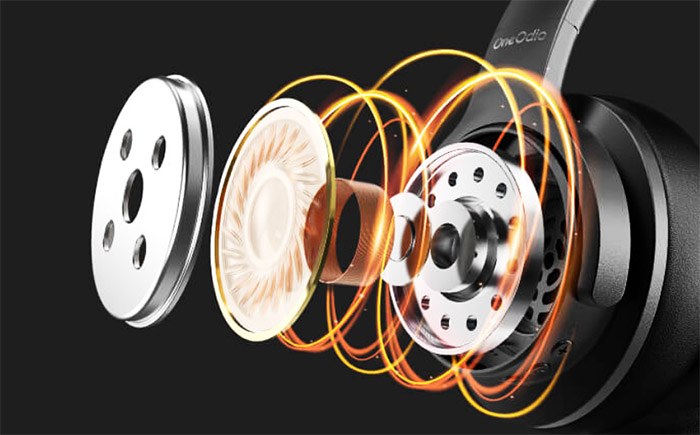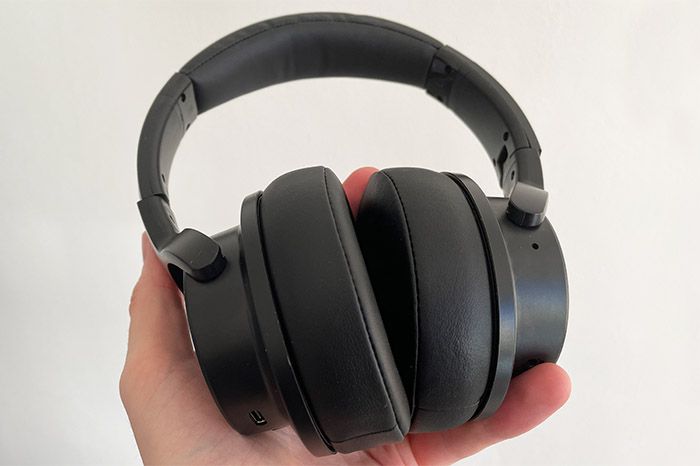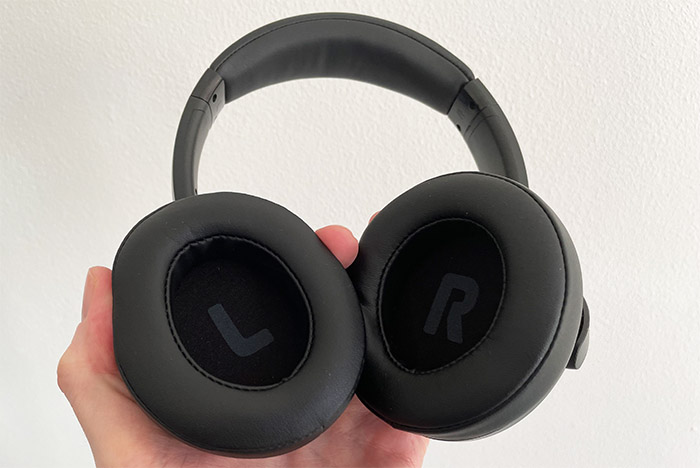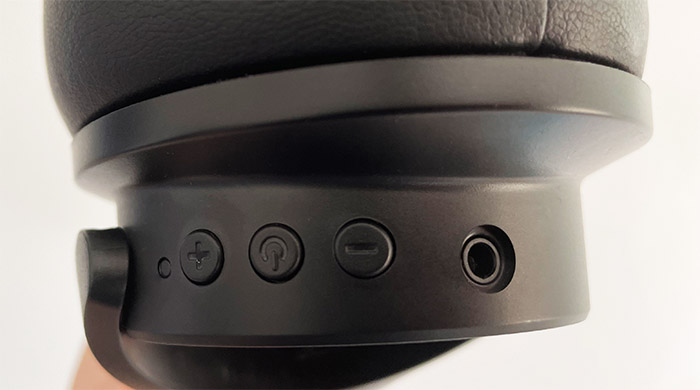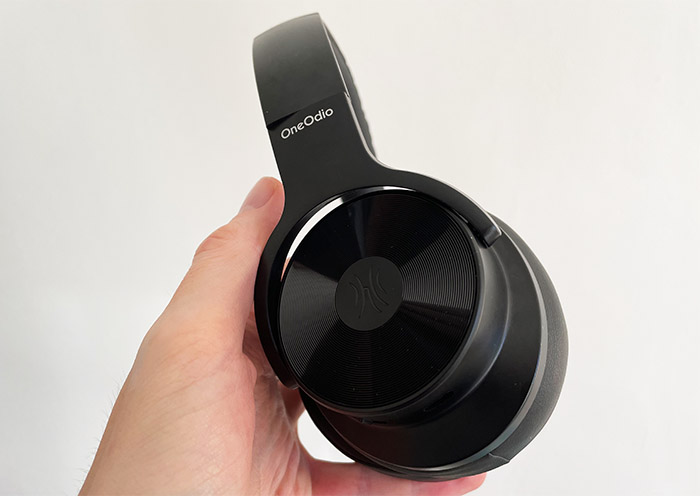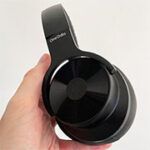The OneOdio A30 is a pair of wireless headphones that use the ANC technology to help block some of the external noise and provide a better sound experience, all that at a very budget friendly cost. The problem is that ANC gets a bit tricky at this price point and seeing it on devices so close to the $50 mark makes me doubt about its effectiveness.
Sure enough, the manufacturers can get it relatively right on budget-friendly devices (such as the Anker Soundcore Life Q30 which I think is the main competitor to the A30) but there is a reason why the Sony WH-1000XM4 and the Bose 700 can cost more than $300. Even so, OneOdio does have some experience with the development of budget-friendly headphones that sound good (I recently checked the A70 and they were an excellent pair of headphones) and this should hopefully translate into a decent ANC implementation as well.
Besides the ANC tech and the wireless connection (there is obviously a way to connect via cable as well), the OneOdio A30 also prides itself with a fairly long lasting battery life. But you will have to choose between Bluetooth and ANC because otherwise, having both enabled with only give you about a full day of use. That being said, I am very curios on whether OneOdio has managed to develop a balanced pair of headphones that manage to sound good both with and without ANC. So let’s put it to the test.
Build Quality and Design
After taking the OneOdio A30 from its box, I do think that they are a step below the A70 in terms of used materials. Don’t get me wrong, they still feel solid and there are soft cushions in the right places, but the plastic felt more solid on the OneOdio A70. Furthermore, the way the adjustable arms slide up and down is far from smooth and it can get temporarily stuck in a certain position. What I did like was that I could easily fully extend the headband without worrying that it may break and yes, I do have to do the ritualistic shaming of Sony in every headphones articles since it has used sub-par materials for the Sony WH-1000XM3 (as well as on the newest Sony WH-1000XM4) and fully expanding the headband will lead to the plastic arms to break very prematurely.
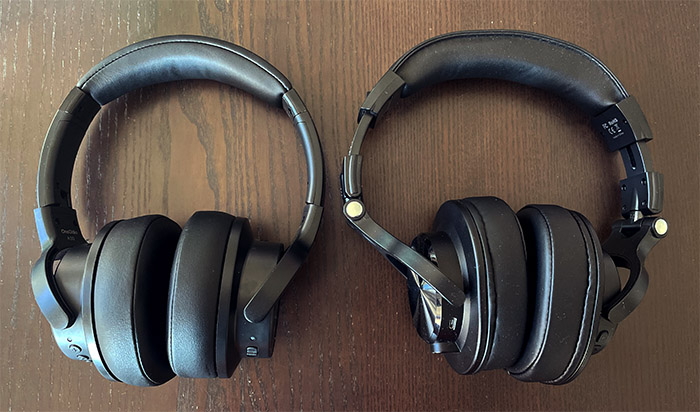
Even if you are careful, they will fail in less than a couple of years (personal experience). Returning to the A30, the sliders are metallic, but a bit more work in making them move smoothly is welcomed with future iterations. Just like the A70, the headband has a proper soft cushion which is thick and soft enough to sit comfortably on my head without feeling any pressure. So yes, there is no plastic support to push on your head as on other inexpensive ANC headphones (I am looking at you, Bluedio T7 Plus).
The earcups are made of plastic, they can move 90 degrees and the faux leather cushions are very thick, slightly bit more than on the OneOdio A70, but they’re not as soft as on the aforementioned pair of headphones. Since there was some light pressure from the headphone arms, it builds up after a certain point and, while I had no trouble keeping the OneOdio A30’s on my head for about 3 hours, after that, some fatigue would install and I had to take a break from listening to music. OneOdio decided not to add touch-sensitive areas on the outer side of the earcups, so you will have to rely on the physical buttons – don’t worry, they’re very intuitive and easy to use. I need to mention that the mandatory record-like pattern is there as I saw on the Bluedio T7 Plus and OneOdio A70 – it doesn’t look bad, but seeing it on almost all budget-friendly headphones does get old really soon.
Getting back to the physical controls, the left earcup has a few on its frame: a plus and a minus button (light press to adjust the volume and long presses to either go to the next or the previous track), as well as a Power button. Light pressing the button will pause or resume the track and long presses will turn on or off the headphones. There is also an LED which will light up to let you know that the OneOdio A30s are turned on and a 3.5mm jack (there’s a cable inside the package). The other earcup is home to the charging port (it’s USB-C, which is great) and to the ANC LED and switch. The switch is easy to find with your finger and, while there is no voice notification to let you know that you switched modes, you will know when ANC is enabled (or disabled) because the sound signature is very different depending on the chosen mode.
The LED will light up when ANC is enabled. I am currently testing the OneOdio A30 during the autumn, so I do appreciate the extra heat that I get on my ears, but do they get unbearably hot during the summer? OneOdio says that the headphones have external ports for ventilation which I assume are the small holes at the top. They’re somewhat effective if you’re standing still and it’s hot in the room, but, if you intend to jog or do any other outdoor sport, your ears will get very sweaty.
Internal Hardware and Connectivity
OneOdio decided to equip the A30 with 40mm drivers (the same as on the A70 and the Sony WH-1000XM3) and this could translate into a fuller sound and perhaps a higher volume. It’s not really going to help that much in getting a good sound quality, that’s left to the sound engineers to adjust and fine tune.
The impedance is also the same as on the A70, so it’s 320Ohms and the manufacturer has revealed that it makes use of a Qualcomm QCC3003 Bluetooth chipset for the wireless connection. Indeed, the OneOdio A30 supports Bluetooth 5.0 which is the new gen and, while it does come as an improvement over the previous generation, the earbuds and headphones don’t really make use of the novelty features. The Bluetooth multipoint is not supported, the bitrate was already good enough for the supported music formats and the coverage is essentially the same as on the Bluetooth v4.0. So yes, you can go as far as 30 feet before experiencing disconnections and sound distortions. Also, after I connected it to a Pixel smartphones, I noticed that the A30 supports AAC, but there’s not aptX.
Sound Quality
The headphones and the active noise canceling have had a very long relationship which can be traced back almost half a century, when the aviation industry was in need of a way to protect the pilot’s ears. And the first brands that created a working pair of ANC headphones were Bose and Sennheiser. That’s still pretty much the main reason to use ANC, since the plane engine remains quite loud even today and, if you travel for more than 6 hours, you may want to get some semblance of sleep before arriving at the destination.
The manufacturers of inexpensive ANC headphones focus a bit less on negating the sound of loud engines (not intentional, it’s mostly due to budget constraints) and more towards slightly improving the sound quality, while muting the very low droning sounds, but nothing more. And it’s fine, since you still get a taste of how ANC works, but is there any negative impact on the sound quality when using ANC with the OneOdio A30? Before playing some songs and seeing how the A30 fares, I decided to first check out a few more technical aspects of the headphones. To do so, I ran a driver quality test which consists of a low sweeping tone and, ideally, there should be no perceptible buzzing. With ANC off, I could hear some buzzing, but the tone was fairly clean nonetheless.
What’s interesting is that the buzzing was almost completely gone away with ANC on. Next, I ran a driver matching test and the sound should feel like being in the middle of your head. And it does feels central for the most part, but there were a few very slight deviations to the left which could impact the accuracy of the 3D sound stage. Lastly, I checked out a binaural recording of some musicians to see how well the OneOdio A30 creates a 3D sound stage. With ANC off, I could tell apart the voices of every singer, the instruments were properly differentiated and the sound was fairly clean. With ANC on, I saw a similar performance, but the treble sounded a bit too harsh and that’s something that will be noticeable with most treble-focused songs. That being said, let’s see how the OneOdio A30 behaves with various types of songs.
Wireless Connection (ANC off and on)
Since there is a wireless connection available, we’ll start with that and the first type of songs were bass-heavy, so the test is for the lower frequencies. With ANC off, I was fairly impressed by the performance, the low bass had a good representation, it does feel more organic and vibrant than on the A70 (which have a reason to be a bit more flat – they’re suitable for DJ-ing). The mid and high bass were alright, again well represented and clear. With ANC on, things got a bit weird. First of all, there is a noticeable discrepancy in volume, as I had to raise it quite a bit to match the level of the ANC off mode. And, unfortunately, that lovely bass is a bit muted and less vibrant.
It’s not bad, but compared to the ANC off mode, it does feel like it comes alive after disabling the active noise canceling. The mids and the highs were very clean and fairly vibrant with ANC off, so overall, the A30 do sound really good for the price tag. But, after enabling the ANC, things again got a bit odd. And that’s because the treble is way too aggressive and after listening Empire of the Sun – Alive for a couple of times, I needed a break, the sibilance was just too much.
Wired Connection (ANC off and on)
Usually, you would get a significantly better performance when connecting the headphones via cable than you would when it uses Bluetooth. But the OneOdio A30 sound surprisingly similar using Bluetooth or the 3.5mm jack, which is a plus. So, with ANC off, I got pretty much the same experience as I did with the wireless connection. The songs sound good and the fine tuning is more than decent. With ANC on, I noticed a couple of things. First, the volume discrepancy was gone, so I didn’t have to adjust it anymore.
And secondly, there was now a slightly more noticeable hiss (white noise?). It didn’t really bother me, but it may some of you. Other than that, the treble is still very harsh, while the bass and the mids seemed to be a bit better represented than on Bluetooth. Overall, in my case, I enjoyed the music far more with ANC off, than with it enabled. But how good is it? Will it cancel out sounds in an airplane? It’s alright with very low frequencies, but everything else remains pretty much untouched, so you may still hear the engine fairly loud – that’s to be expected for an ANC implementation at this price point.
Before moving on, I decided to play the Bowls from Carribou just to see how well the headphones will handle a complicated song with lots of instruments and it did very well with both ANC off and on. Everything was clear and there was a proper differentiation between instruments.
Call Quality
I had a great experience with the microphones on the OneOdio A70 since there was pretty much no perceptible difference when using the speaker of my phone and the headphones. It seems that the A30 offer the same performance because the person on the other side of the call could clearly hear my voice even if there was some environmental noise around me and I could hear that person clearly as well, especially when enabling the ANC.
Battery Life
The OneOdio A30 headphones are equipped with a 500mAh battery, which is well below the 950mAh of the A70 and yes, this does mean that you will need to recharge the headphones more often. The manufacturer says that if you decide to use only Bluetooth, then you should get about 30 hours before needing recharging. This is the mode that I used more often and I listened to music for about 3-4 hours every day for about a week before the battery got depleted, so the numbers check out. If I was to enable the ANC with Bluetooth, then this time would almost got cut in half, but if I was to use the provided cable and still enable the ANC, then OneOdio says that the battery should last for 50 hours. And it’s true that the wired connection with ANC is far more forgiving on the battery life.
Conclusion
The ANC technology is usually not that great on budget-friendly headphones, so, unless the manufacturer is willing to sell them at a loss, they have to cut some serious corners to keep themselves competitive. The OneOdio A30 have a decent build quality, they’re very comfortable to wear and the controls are intuitive. The sound quality is very good with ANC off regardless if you’re going to use them wirelessly or by relying on the cable, but the ANC is a bit strange. I know that some people loved the ANC on the OneOdio A30 and they couldn’t listen to music without this feature, but I wasn’t really that much of a fan. It’s not bad, since it does cancel out some droning sounds, but I found the ANC off mode to be so much better, with a more pleasant, fuller sound. Even if ANC wasn’t an added feature, I would still find the sound quality of the A30 quite impressive, especially for the price tag and, if you don’t mind the somewhat more aggressive treble with ANC on, then the OneOdio A30 is one of the best pair of headphones in its price range.
OneOdio A30
-Pros
- Very good sound quality with ANC off (considering we're dealing with a budget-friendly device)
- Intuitive controls
- The headphones are fairly comfortable
- Very good call quality
Cons
- The treble is a bit aggressive with ANC on
- There is a discrepancy in the volume level between ANC on and off when connected via Bluetooth
- The battery is a bit small

Mark is a graduate in Computer Science, having gathered valuable experience over the years working in IT as a programmer. Mark is also the main tech writer for MBReviews.com, covering not only his passion, the networking devices, but also other cool electronic gadgets that you may find useful for your every day life.

